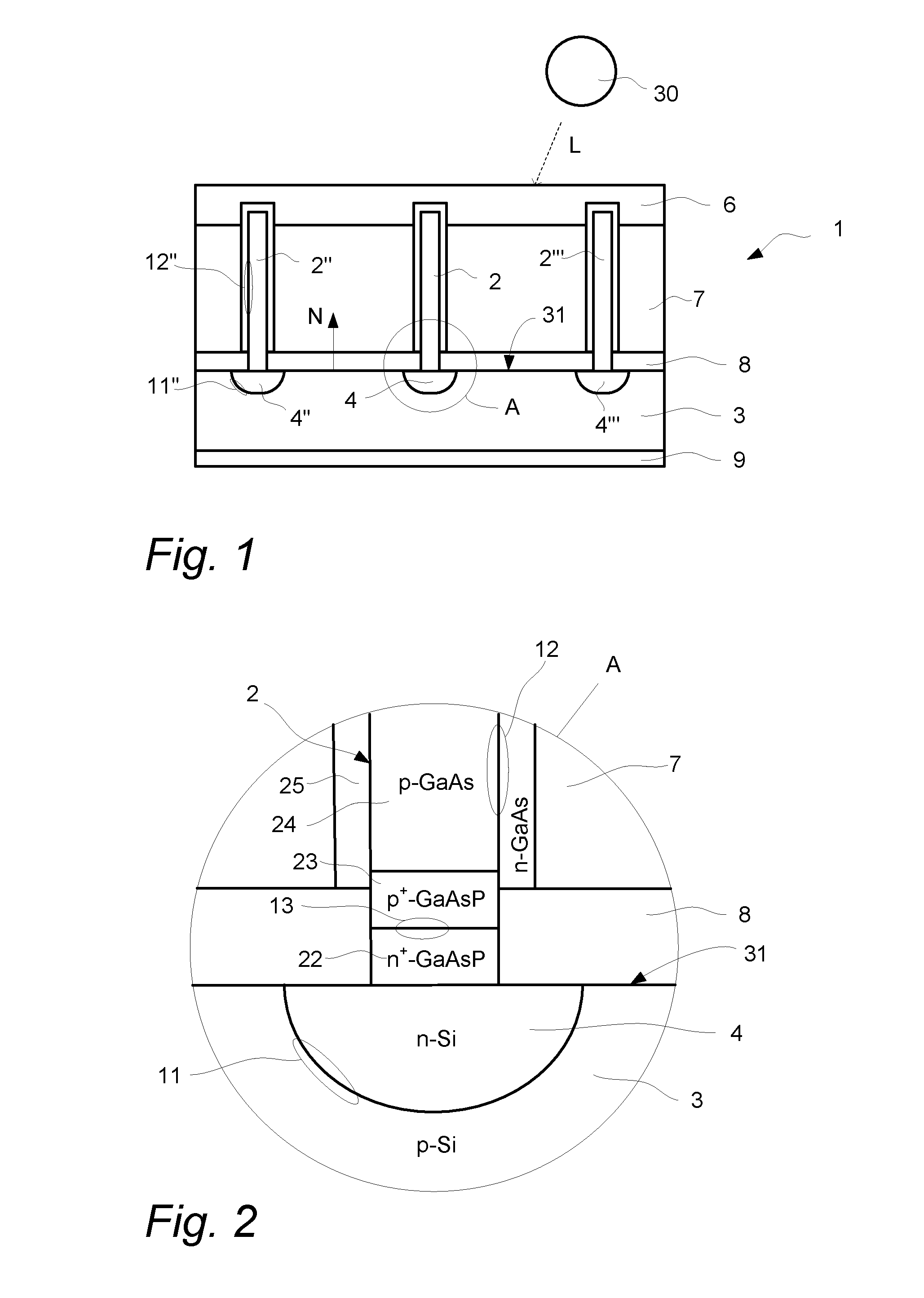Multi-junction photovoltaic cell with nanowires
a photovoltaic cell and nanowire technology, applied in the field of photovoltaic cells, can solve the problems of limiting the conversion efficiency of light into electricity, the efficiency of the dot junction solar cell is still not optimal, and the disadvantage of the dot junction solar cell in terms of photon energy efficiency, so as to improve the efficiency of the dot junction solar cell and efficiently convert light into electricity
- Summary
- Abstract
- Description
- Claims
- Application Information
AI Technical Summary
Benefits of technology
Problems solved by technology
Method used
Image
Examples
Embodiment Construction
[0036]With reference to FIG. 1 a multi-junction photovoltaic (solar) cell 1 comprises a planar substrate 3 made of p-doped Si (silicon). The substrate 3 has an upper surface 31 intended to face light L that is incident on the solar cell 1, i.e. the upper surface 31 is the upper, front side of the substrate 3. A planar back contact 9 made of e.g. Al (aluminum) is arranged on the lower surface of the substrate 3 opposite the upper surface 31. In the upper surface 31 of the substrate 3 an n-doped region 4 is located. This region 4 is dome-shaped with the planar part of the region 4 being aligned with a plane formed by the upper surface 31. Accordingly, the curved part of the dome shaped region 4 extends into the substrate 3. However, the extent of the region 4 is smaller than the total thickness of the substrate 3. A nanowire 2 is located on the substrate 3 at the center position of the doped region 4. This means that a geometrical axis defined by the longitudinal direction of the nano...
PUM
 Login to View More
Login to View More Abstract
Description
Claims
Application Information
 Login to View More
Login to View More - R&D
- Intellectual Property
- Life Sciences
- Materials
- Tech Scout
- Unparalleled Data Quality
- Higher Quality Content
- 60% Fewer Hallucinations
Browse by: Latest US Patents, China's latest patents, Technical Efficacy Thesaurus, Application Domain, Technology Topic, Popular Technical Reports.
© 2025 PatSnap. All rights reserved.Legal|Privacy policy|Modern Slavery Act Transparency Statement|Sitemap|About US| Contact US: help@patsnap.com



